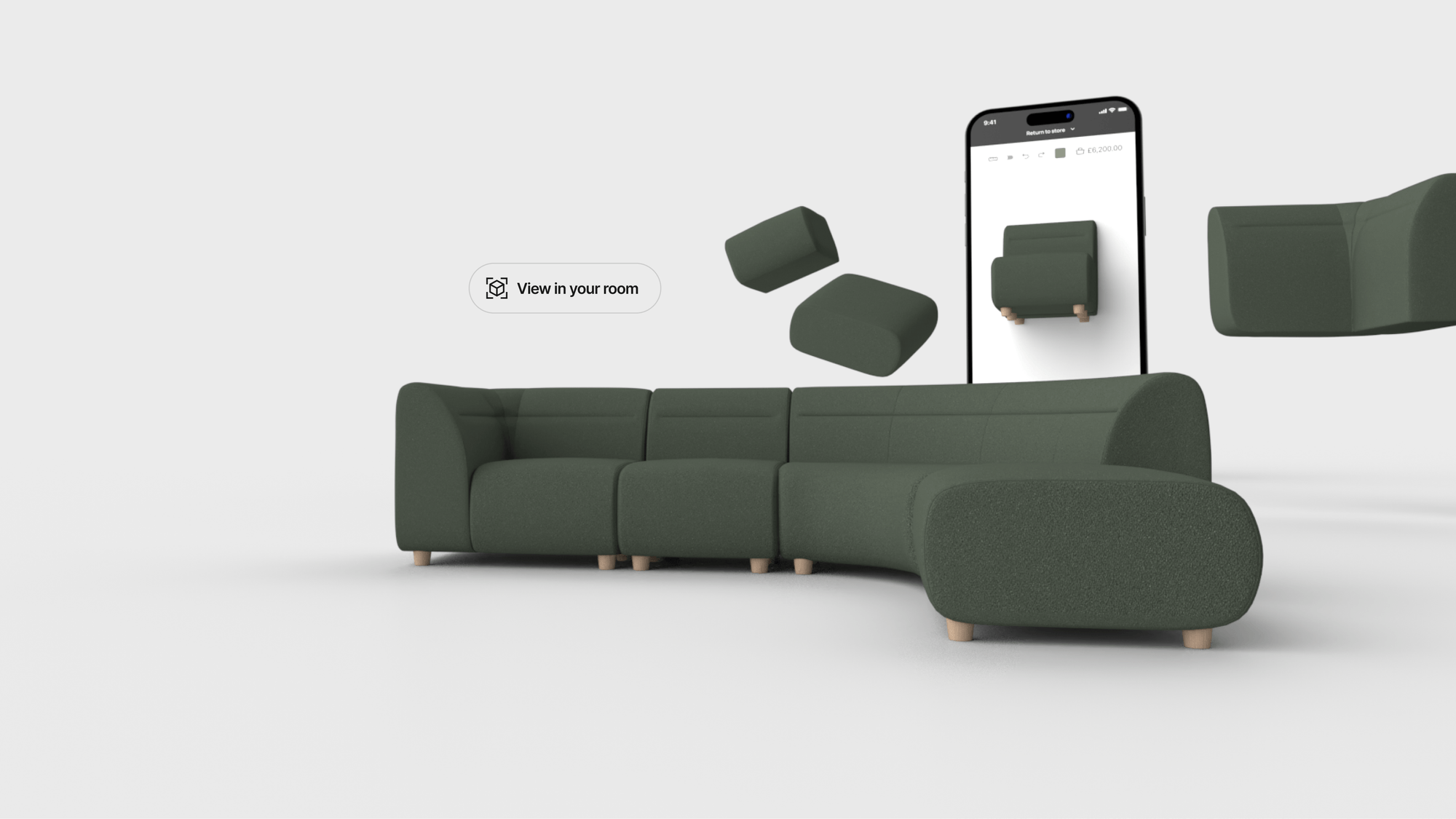The furniture world loves a comeback story, and right now, few categories are enjoying a glow-up quite like the modular sofa (often referred to as a 'Sectional Sofa' too). Once a niche format for flexible living spaces, these shape-shifting designs have become the centrepiece of the modern home. And according to Fixtuur’s analysis of Google Trends data, global searches for modular sofas have risen by more than 80% since 2023, peaking in 2025 across the UK, US, Australia, and Northern Europe. That’s not a fad, but a lifestyle shift happening right now!

The rise and irresistible logic of the modular sofa trend
Modular sofas are built for the way we actually live. Renters who move often, families who grow and rearrange, and homeowners blending work, relaxation, and entertainment in one space. The idea of a static, one-size-fits-all couch doesn’t always make sense anymore.
Online shoppers are proving this too with their search behavior. Collectively, terms like modular sofa, sectional couch, L-shaped sofa, and U-shaped sofa now attract over 18 million monthly searches worldwide, making it one of the fastest-growing product categories in furniture e-Commerce. That kind of search volume signals major opportunity.

For retailers, it’s a high-margin category and huge potential they’re sitting on (excuse the pun!). Unlike single-piece sofas, modular versions are sold as sets of components (arms, corners, chaises, ottomans) that can be priced individually and combined in near-endless configurations. That creates three key advantages: flexibility for the shopper, scalability for production, and additional profit levers for retailers.
When a customer builds a configuration, they often spend more than if they’d picked a static model too. Adding a corner or chaise module is an easy “yes.” Custom fabric upgrades are common. Replacement parts are simple to ship. The financial logic stacks up beautifully.
And it’s not just about the margins. Modular sofas ship smarter, fit better, and reduce return risk. Smaller, stackable modules make delivery cheaper and reduce the number of failed or damaged deliveries. If one piece is scratched or flawed, it’s replaced, rather than the entire sofa.
From a sustainability perspective, it’s also a win. Less wasted packaging, fewer unnecessary returns, and more longevity when customers can reconfigure rather than replace.
Why modularity is great for margins, logistics, and the planet
The modular format represents a rare alignment between consumer desire and retailer efficiency. It ticks every box: customization, convenience, sustainability, and profitability.
Traditional photography simply doesn’t keep up. To display even a fraction of the potential combinations is an expensive and incomplete exercise where retailers would need to photograph dozens of shapes, colors, and fabric options.
By contrast, once a retailer invests in high-quality CGI assets, every new fabric or module variant can be produced as a 'digital 3D twin' at a fraction of the cost and time. Launching new collections becomes faster, cheaper, and greener.
For a retailer like Heal’s, who has embraced this digital approach, the results are tangible. Their online modular sofa experience allows shoppers to build and visualize their perfect layout by choosing fabrics, colors, and configurations interactively. It’s engaging, confidence-boosting, and conversion-driving. The customer doesn’t just see a sofa; they see their sofa.
That psychological ownership is powerful, too! Research into choice psychology consistently shows that when consumers create rather than select, they experience higher satisfaction and stronger purchase intent. Building a sofa online becomes a memorable, emotional part of the buying journey, and not just a transaction.
And once that personalized design can be placed in a real room via Augmented Reality (AR), the experience is complete. It bridges imagination and reality to help shoppers see exactly how their creation fits in their space. This combination of choice and confidence transforms a high-consideration purchase into a “click to buy” moment.
How 3D configuration turns a trend into an online success
At Fixtuur, we’re pioneering how interactive 3D experiences redefine what’s possible in furniture e-Commerce. Our Modular Sofa Builder was designed specifically to help retailers tap into this growing demand without the complexity and cost that often holds them back.
![Fixtuur Modular Software 1 [FA]](https://www.fixtuur.com/hs-fs/hubfs/Sales%20Email%20Images+GIFs%202025/Product%20GIFs/Modular%20Configurator%20GIFs/Fixtuur%20Modular%20Software%201%20%5BFA%5D.gif?width=640&height=577&name=Fixtuur%20Modular%20Software%201%20%5BFA%5D.gif)
It enables shoppers to:
-
Configure every combination of modules, fabrics, and finishes in real time.
-
Switch seamlessly between 3D configuration and in-room AR view.
-
Visualize their unique design instantly - no app download required.
For retailers, it offers something even more valuable:
-
Fewer product photography requirements.
-
Faster route to market for new lines.
-
Richer behavioural data on what customers build, explore, and buy.
-
Higher average order values and lower return rates.
It’s a scalable and future-proof way to capture the modular furniture boom, while improving the customer experience in their buying journey.
So the question isn’t whether shoppers want modular sofas (the data already proves they do.) The real question is: why wouldn’t retailers meet that demand with an experience designed for it?
Because in a category built around flexibility, customization, and personal style, static product pages are the least modular thing imaginable.
Want to see a 3D modular sofa builder live?
We’ll share examples and a quick demo tailored to your range (indoor or outdoor).


